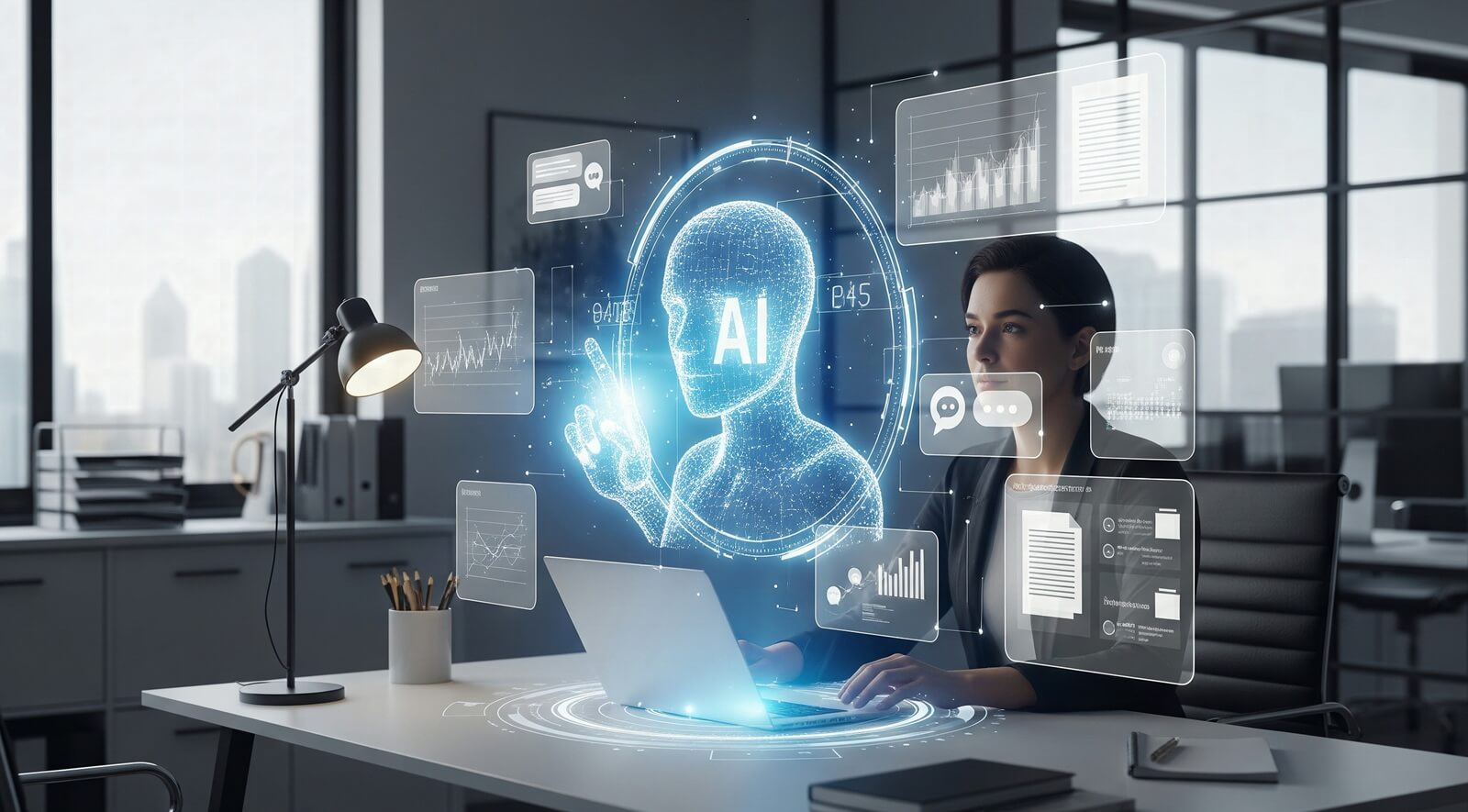In today’s hyper-competitive design and engineering landscape, cost efficiency is no longer a financial goal — it’s a survival metric. Firms are expected to deliver sophisticated, data-heavy projects faster than ever, while maintaining precision, client satisfaction, and compliance. Yet, rising software costs, infrastructure complexity, and workflow redundancies often erode profitability long before a project reaches completion.
Enter artificial intelligence. Beyond its buzzword status, AI cost efficiency represents a measurable advantage for design firms that know how to harness it. From automating routine drafting tasks to optimizing compute performance for 3D rendering, AI transforms operational bottlenecks into predictable, scalable savings.
At Stealth Technology Group, we’ve seen firsthand how AI infrastructure optimization enables firms to deliver more value at lower cost. Through predictive analytics, intelligent resource management, and proactive system maintenance, Stealth’s AI-driven hosting platforms routinely reduce downtime by up to 35%, lower IT support costs by 25%, and accelerate project delivery cycles by 40%.
This is the new economics of design — where efficiency is engineered by intelligence.
![]()
1. The Cost Challenge in Modern Design Firms
The architecture, engineering, and construction (AEC) industry has long struggled with balancing creativity and cost control. Projects demand immense computing resources, sophisticated collaboration tools, and precise data management — all of which contribute to escalating operational overhead.
Cloud-based design environments have eased some of this strain, but they’ve also introduced hidden expenses. Cloud hosting, licensing, and compute spikes can quickly exceed budget forecasts, particularly during high-load phases such as rendering, simulation, or multi-user collaboration.
In addition, fragmented technology ecosystems — AutoCAD for modeling, SketchUp for visualization, Trimble for geospatial coordination — often create inefficiencies when data must be manually transferred or reformatted between platforms. These inefficiencies compound, draining hundreds of man-hours and inflating costs.
The modern design firm must not only optimize how it works but also rethink where and why its resources are consumed. This is where AI cost efficiency moves from concept to competitive advantage.
2. Understanding AI’s Financial Impact on Operations
Artificial intelligence is more than a technical enhancement; it is an economic multiplier. By automating decisions and optimizing workflows, AI directly impacts the firm’s bottom line in three measurable dimensions: labor productivity, system performance, and cost predictability.
First, AI replaces manual oversight with autonomous optimization. For example, instead of IT teams manually allocating rendering nodes or adjusting server loads, AI orchestration platforms automatically detect performance stress and reallocate resources in real time. This reduces the need for 24/7 administrative monitoring and improves cost efficiency by minimizing idle compute time.
Second, AI enhances workforce productivity. Administrative duties such as version tracking, data validation, or error correction can consume 20–30% of an architect’s time. AI-driven automation tools complete these tasks autonomously, returning thousands of billable hours annually to creative design work.
Third, AI introduces predictability into previously volatile cost structures. Through AI ROI for architects, firms can quantify savings not just as avoided costs, but as new capacity — the ability to take on more projects without increasing headcount or infrastructure.
The result is a measurable improvement in profit margins, resource utilization, and long-term scalability.
3. Automating Repetition: Turning Labor Hours into Strategic Time
Design firms lose more time to repetition than to innovation. Repetitive actions — adjusting render settings, synchronizing model revisions, validating drawing consistency — drain valuable human focus. AI transforms these labor drains into automated workflows, freeing teams to focus on strategic creativity.
Here’s where the impact becomes tangible:
- Automated Drafting Assistance: AI tools can learn individual design preferences, automatically adjust drawings to code standards, and even predict structural conflicts before human review.
- Document Management: AI-powered systems categorize and version-control design files autonomously, eliminating redundant manual work and reducing human error.
- Design Optimization: Generative algorithms propose multiple design solutions within defined constraints, saving days of iteration time.
- Client Presentation Automation: Rendering AI produces real-time visualizations with minimal human input, reducing the cost of producing client-ready assets.
The labor savings compound exponentially over time. When AI manages the mechanical aspects of design, human creativity is no longer limited by process fatigue or technical delay.

4. Infrastructure Optimization: How AI Improves Utilization and Reduces Waste
In most design environments, resource utilization is uneven. During peak periods such as project launches or final submissions, infrastructure demand skyrockets, pushing servers and cloud compute resources to full capacity. Yet, for much of the project lifecycle, these same systems remain underutilized — leading to wasted cost.
AI infrastructure optimization solves this imbalance through continuous performance analysis. By monitoring live workloads across AutoCAD, Revit, and SketchUp, AI can dynamically allocate computing power, bandwidth, and storage where it’s needed most.
For example, when AI detects that rendering queues are idle or data synchronization is complete, it automatically powers down or scales back virtual machines — ensuring firms pay only for active usage. This AI operational savings model transforms IT infrastructure from a fixed cost into a variable, efficiency-based expenditure.
Moreover, AI tracks real-time application performance, predicting when performance degradation might occur and resolving issues before they impact productivity. This reduces the risk of costly downtime and keeps design cycles on schedule.
5. Predictive Maintenance and Downtime Prevention
Downtime is one of the most expensive operational risks in architecture and engineering. Every minute of system failure during design collaboration or rendering equates to lost productivity and delayed client deliverables.
AI predictive maintenance provides a preemptive solution. By analyzing performance logs, error patterns, and environmental metrics, AI predicts when a system component is likely to fail — whether it’s storage I/O latency, CPU bottlenecking, or software conflicts.
Instead of waiting for a disruption to occur, the system triggers maintenance alerts and can even self-correct through automated patching or workload migration. This proactive model drastically reduces unplanned outages and lowers mean time to repair (MTTR) by over 60%.
For design firms, the economic impact is substantial. Each hour of prevented downtime translates into both immediate financial savings and long-term client trust.
6. Quantifying ROI: Real-World Metrics and Case Insights
AI implementation only matters if it generates measurable return on investment. When analyzing AI ROI for architects, firms should evaluate metrics that connect efficiency with profitability.
Key performance indicators (KPIs) for measuring AI-driven ROI include:
- Downtime Reduction: Firms using AI infrastructure analytics report a 30–40% decrease in downtime during active project cycles.
- Resource Utilization: Dynamic allocation increases hardware efficiency by 25–35%, reducing cloud costs proportionally.
- Labor Productivity: Automation of repetitive tasks restores an average of 12–15 hours per week per designer.
- Operational Cost Savings: Average IT support costs drop by 20–30% through AI monitoring and self-healing workflows.
- Project Delivery Speed: Projects reach completion up to 25% faster with fewer manual dependencies.
A mid-size engineering firm, for example, integrated Stealth’s AI analytics across its hybrid infrastructure. Within four months, system downtime fell by 41%, annual support costs dropped by 26%, and the firm reallocated the savings to upgrade design hardware — resulting in improved performance and faster client turnaround.
7. Stealth Technology Group: Enabling Measurable AI Operational Savings
At Stealth Technology Group, we don’t view AI as a buzzword — we see it as the architecture of operational intelligence. Our AI-driven hosting and infrastructure systems are designed specifically for the unique workloads of architects, engineers, and design innovators.
Through integrated analytics, Stealth’s platform continuously monitors system performance, predicting and resolving potential bottlenecks before they interrupt workflow. Each client deployment benefits from three core advantages:
- Predictive Resource Allocation: AI adjusts compute power in real time based on workload analysis, ensuring maximum performance with minimum cost.
- Self-Healing Systems: When performance degradation or anomalies are detected, AI automatically executes corrective actions — from patching services to redistributing resources.
- Unified Performance Visibility: Firms gain a holistic dashboard view across all design applications, with financial reporting that links usage directly to operational savings.
Stealth’s clients consistently achieve double-digit reductions in IT overhead while maintaining superior project throughput and delivery reliability. This is AI cost efficiency operationalized — intelligence that pays for itself.

Summary
AI has redefined what it means to be efficient. For design firms, efficiency is no longer measured by how fast teams can work but by how intelligently systems can think. With AI cost efficiency, every process, project, and resource becomes an opportunity for optimization and savings.
By automating redundant workflows, predicting downtime, and balancing performance against expenditure, AI delivers AI operational savings that compound over time — improving profitability, reliability, and scalability simultaneously.
Stealth Technology Group enables firms to capture these benefits immediately through adaptive AI infrastructure. Our solutions empower design leaders to deliver faster, reduce operational costs, and reinvest savings into innovation.
If your firm is ready to convert technology into measurable financial performance contact us or call (617) 903-5559 to schedule a complimentary infrastructure efficiency audit and discover your AI ROI potential.



